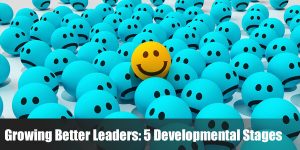Choose “Thrive” Instead of “Survive”
Do you ever wonder why some very smart people don’t live up to their potential? Maybe even you are included in this category. It may come down to… mindset.
Mindset is “an established set of attitudes held by someone,” says the Oxford American Dictionary. It turns out, however, that a set of attitudes needn’t be so set, according to Carol Dweck, professor of psychology at Stanford.
Dweck proposes in Mindset: The New Psychology of Success, (2006) that everyone has either a fixed mindset or a growth mindset. According to this accomplished researcher and Stanford professor, we have the power to shift our mindset from one that barely gets us by to one whereby we thrive.
Open and Closed Mindsets
Everyone has two basic mindsets: open with growth, or closed and fixed.
- One mindset is open to learning and changing, believing one can always do better.
- The fixed mindset is entrenched in the belief that natural talents and abilities predetermine success.
With an open mindset, people believe they can always learn more, do more, and improve. They are confident, yet humble enough to work harder to expand their potential. They accept criticism as important feedback, not as a personal insult.
With a closed mindset, people believe success is based on their innate talents; thus, they needn’t work hard. They think their abilities are set in stone: either they have them or they don’t. They must prove themselves over and over again, trying to look smart and accomplished at all costs.
Mindset Motivates Behavior
When you have a fixed mindset you:
- Want to look smart (which means you avoid challenges and avoid the possibility of failure)
- Get defensive
- See effort and hard work as fruitless and not worth it
- Do not listen to criticism (it makes you feel attacked)
- Ignore useful or even positive feedback
- Feel threatened and envious when others enjoy success
- Give up too early, plateau, and never reach your potential
With a growth mindset you always have a desire to learn and improve, so you tend to:
- Embrace challenges
- Persist in the face of setbacks
- See effort and hard work as a necessary path to mastery
- Learn from criticism and often seek out others’ opinions
- Find lessons and inspiration in the success of others
When you adopt a growth mindset you reach ever higher levels of achievement. You’re not afraid of risks because they’re part of the learning and growing process.
Mind Shift
Begin by paying attention to all the ways you are using a fixed mindset. You could be applying fixed thinking to your career, sports, and even to your relationships.
To replace a fixed mindset with a growth mindset you’ll need to embrace the things that have felt threatening, such as criticism, setbacks, and challenges. Are you willing to look at these things as learning opportunities instead of threats?
Remember: the first step toward change is awareness. You can’t shift your attitude until you’re aware of the many ways you’re using a fixed mindset.
Three Questions to Shift Your Mindset
Ask yourself these three questions to shift your thinking:
- What can I do today that would advance the knowledge and skills I need to be successful at my goal?
- What can I learn about this task so I can achieve it?
- Who can I ask for help or feedback with this goal?
The difference between successful people and those who are not is often as simple as asking yourself these three questions: what can I do, what can I learn, who can help me?
This is how a growth mindset starts to take hold in your brain. Instead of putting things off, or finding reasons and rationalizations for why you’re not succeeding like you think you should, answer these questions and then make a concrete plan.
It’s not enough to dream, although that helps to form a clear picture of what you want. You also need to visualize and articulate what you’re going to do, when you will do it, and specify the details.
The idea is not only to shift your mindset, but to also get into action. The best mindset in the world is worthless if you don’t follow through.
Recovering From a Closed Mindset
Anyone can change his or her mindset. It requires conscious practice and vigilance, as well as a willingness to be open to learning and changing.
For example: “At 9 a.m. tomorrow, I’ll set that appointment to discuss the situation. I’ll ask questions and receive feedback, without acting defensive. I won’t make excuses. I’ll take in information, be receptive, and thank others for their input. I can decide what to do later.”
Detailed plans that cover when, where, and how you’re going to do something lead to high levels of follow-through and increase your chances of success. Even if you have negative feelings, you must carry through with your growth-oriented plan.
How to Grow Your Mindset
Are you in a fixed or growth mindset in your workplace? Ask yourself the following questions, which will encourage an open mindset:
- Are there ways I could be less defensive about my mistakes?
- How could I profit more from the feedback I get?
- In what ways can I create more learning experiences for myself and my team?
- How can I help myself and my team get mentoring or coaching?
- In what ways can I create a culture of self-examination, collaboration, and teamwork?
- What are the signs of groupthink in my workgroup?
- How can I encourage alternative views and constructive criticism?

Creator of the KASHBOX: Knowledge, Attitude, Skills, Habits
Helping You Realize Your Potential
I help people discover their potential, expand and develop the skills and attitudes necessary to achieve a higher degree of personal and professional success and create a plan that enables them to balance the profit motives of their business with the personal motives of their lives.











